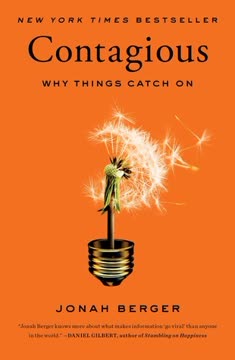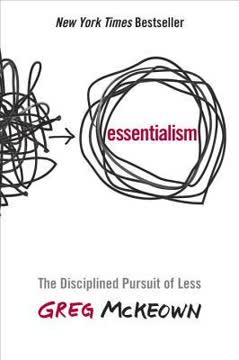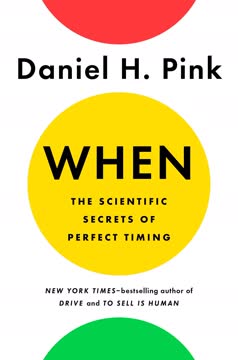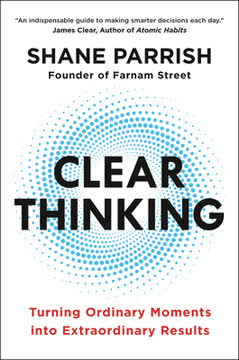Key Takeaways
1. The Myth of Sudden Creative Inspiration
"Whether it is J. K. Rowling being struck with the idea for Harry Potter on a train to London, or Mozart being able to compose songs without effort, these accounts have become modern-day staples of what I call the inspiration theory of creativity: the idea that creative success results from a mysterious internal process punctuated by unpredictable flashes of genius."
Debunking the myth. The popular notion of creativity as a sudden, mystical inspiration is largely a misconception. This belief, perpetuated by stories of artists and innovators experiencing "eureka" moments, overshadows the reality of creative work. In truth, most creative breakthroughs are the result of prolonged effort, practice, and refinement.
Historical context. This myth has roots in ancient Greek philosophy, where creativity was seen as divine inspiration. The Renaissance further elevated the idea of the solitary genius, leading to our modern glorification of sudden creative insights. However, research and real-life examples consistently show that creativity is a process involving deliberate practice, knowledge accumulation, and persistent iteration.
Impact on perception. The inspiration theory of creativity can be discouraging for aspiring creatives who don't experience these mythical flashes of genius. It creates a false dichotomy between "creative" and "non-creative" individuals, ignoring the potential for cultivating creativity through structured approaches and dedicated effort.
2. Understanding the Creative Curve: Balancing Familiarity and Novelty
"There is a bell-shaped curve relationship between preference and familiarity. As individuals or groups are exposed to something, they like it more and more with each additional exposure until it reaches a peak of popularity. At that point it becomes overexposed, and each additional exposure leads to lower popularity."
The creative curve explained. The creative curve illustrates the relationship between an idea's familiarity and its popularity. It shows that the most successful creative works strike a balance between the familiar (which makes people comfortable) and the novel (which captures attention and interest).
Stages of the curve:
- Initial exposure: Low popularity due to unfamiliarity
- Rising popularity: Increasing familiarity leads to growing preference
- Peak popularity: Optimal balance of familiarity and novelty
- Declining interest: Overexposure leads to decreased popularity
Application in creative fields. Understanding this curve is crucial for creators in various fields, from music and literature to entrepreneurship and product design. It helps in timing the release of new ideas or products, ensuring they're neither too avant-garde nor too derivative.
3. The 20% Principle: Intense Consumption Fuels Creativity
"The 20 percent principle: by spending 20 percent of your waking hours consuming material in your creative field, you can develop an intuitive, expert-level understanding of the level of familiarity of an idea—where it lies on the creative curve—even without real-world experience."
Deliberate consumption. Successful creatives consistently dedicate a significant portion of their time to consuming content in their field. This intense consumption provides the raw materials for creativity, helping to develop an intuitive understanding of what works and what doesn't.
Building mental models. Through extensive consumption, creators build a library of mental models and exemplars. These serve as reference points for recognizing patterns, understanding audience preferences, and identifying opportunities for innovation.
Practical application:
- Read extensively in your field
- Watch, listen to, or experience the work of others
- Attend industry events and exhibitions
- Analyze both successful and unsuccessful works
4. Imitation as a Path to Innovation
"Originality, freshness of perceptions, divergent thinking ability are all well and good in their own right, as desirable personal traits. But without some form of public recognition they do not constitute creativity, and certainly not genius."
Learning through imitation. Contrary to the popular belief that imitation stifles creativity, it's actually a crucial step in developing creative skills. By studying and imitating successful works, creators learn the underlying patterns, structures, and techniques that resonate with audiences.
The Franklin method. Named after Benjamin Franklin's approach to improving his writing, this method involves carefully studying and reconstructing successful works to understand their structure and effectiveness. It allows creators to internalize proven formulas while developing their own unique voice.
Balancing imitation and innovation:
- Study the masters in your field
- Analyze the structure and techniques of successful works
- Practice recreating these works to understand their mechanics
- Gradually introduce your own innovations within familiar frameworks
5. Building a Creative Community: Four Essential Roles
"When we glimpse a famous entrepreneur, actor, musician, or poet on the cover of a magazine, it can be easy to subscribe once again to the lone genius theory of creativity. Yet pretty much all the high-achieving creatives I spoke with for this book had built a creative community made up of a group of people who continue to help them on their journey toward creating hits."
The four key roles:
- Master Teacher: Provides guidance, feedback, and industry knowledge
- Conflicting Collaborator: Challenges ideas and complements skills
- Modern Muse: Offers inspiration, motivation, and fresh perspectives
- Prominent Promoter: Provides credibility and helps with recognition
Importance of community. Creativity thrives in a supportive ecosystem. A well-rounded creative community provides diverse perspectives, constructive feedback, emotional support, and opportunities for collaboration and growth.
Building your community:
- Seek out mentors and teachers in your field
- Collaborate with peers who challenge and complement your skills
- Surround yourself with inspiring and motivating individuals
- Network with influencers who can promote your work
6. Data-Driven Iterations: Refining Ideas for Success
"Across creative fields, creative people all had their own methods of refining ideas in order to end up with a shortlist of those with the highest probability of success."
Iterative process. Successful creators use a systematic approach to refine their ideas, often involving multiple rounds of testing and improvement. This process helps in identifying and developing ideas that have the highest potential for success.
Four-step refinement process:
- Conceptualization: Generate a wide range of initial ideas
- Reduction: Use data and feedback to narrow down options
- Curation: Develop and refine the most promising ideas
- Feedback: Gather real-world data to assess and improve
Leveraging data. Modern creators have access to various tools and methods for gathering data on audience preferences and reactions. This can range from sophisticated market research to simple online surveys or social media engagement metrics.
7. J.K. Rowling's Journey: A Case Study in Deliberate Creativity
"Rowling didn't wait for ideas to strike her. Instead, she toiled for years to create something great. She planned, outlined, and developed reference materials, going through endless iterations and drafts to get her story and her characters just right."
Deliberate process. Contrary to the popular narrative of sudden inspiration, J.K. Rowling's success with Harry Potter was the result of years of deliberate planning, writing, and refining. Her journey exemplifies the practical application of the creative curve principles.
Elements of Rowling's approach:
- Intensive consumption: Years of reading and studying literature
- Structured planning: Detailed outlines and character development
- Iterative writing: Multiple drafts and revisions
- Leveraging community: Support from family, agent, and publisher
Lessons for creators:
- Invest time in developing your craft through study and practice
- Plan and structure your work, even when creating fiction
- Be prepared for long-term commitment to refine your ideas
- Build a supportive network to help navigate challenges
Last updated:
FAQ
What's The Creative Curve about?
- Understanding Creativity: The Creative Curve by Allen Gannett explores the science behind creativity, challenging the myth that it is solely the result of innate talent or sudden inspiration.
- Creative Curve Concept: The book introduces the "creative curve," which shows how familiarity and novelty interact to influence preferences for ideas, products, and art.
- Four Laws of Creativity: Gannett outlines four laws—consumption, imitation, creative communities, and iterations—that successful creators follow to maximize their chances of producing hits.
- Real-World Examples: The book includes anecdotes from various creators, illustrating how they navigated their creative journeys and emphasizing that creativity can be learned and mastered.
Why should I read The Creative Curve?
- Practical Insights: The book offers actionable insights for enhancing creative abilities in business, art, or personal projects, providing a roadmap for developing creativity as a skill.
- Debunking Myths: It challenges the myth of the "lone genius" and highlights the importance of collaboration and community in the creative process.
- Research-Backed: Gannett draws on interviews with successful creators and research from psychology and neuroscience, making the content credible and relatable.
- Empowering Message: The book empowers readers by showing that creativity is accessible to everyone, not just the so-called "geniuses."
What are the key takeaways of The Creative Curve?
- Creativity is Learnable: Creativity is not an innate trait but a skill that can be developed through practice and understanding.
- Balance Familiarity and Novelty: The creative curve illustrates the importance of balancing familiar elements with novel ideas to achieve mainstream success.
- Engage with the Four Laws: The four laws—consumption, imitation, creative communities, and iterations—serve as a framework for enhancing creativity.
- Community Matters: Building a creative community is vital for success, providing opportunities for learning and feedback.
What are the four laws of creativity in The Creative Curve?
- Law of Consumption: To create successful ideas, one must consume a wide range of content in their field to identify trends and gaps in the market.
- Law of Imitation: Imitation is crucial in the creative process, allowing creators to build upon existing ideas and refine them into something new and valuable.
- Law of Creative Communities: Collaboration and feedback within creative communities enhance the creative process by providing valuable insights and support.
- Law of Iterations: Refining and iterating on ideas is necessary, as successful creators often go through multiple versions of their work to improve.
How does the creative curve work according to The Creative Curve?
- Bell-Shaped Relationship: The creative curve is represented as a bell-shaped graph, where initial exposure to an idea increases preference, peaking before declining.
- Familiarity vs. Novelty: People are drawn to ideas that are both familiar and novel, and creators must find the sweet spot where their ideas resonate while offering something new.
- Cultural Trends: The curve applies to cultural trends, where ideas gain popularity, peak, and eventually fade, helping creators time their ideas for maximum impact.
What is the inspiration theory of creativity in The Creative Curve?
- Myth of Sudden Insight: The inspiration theory posits that creativity is a mystical process characterized by sudden flashes of insight, which Gannett argues is misleading.
- Individual Genius: This theory emphasizes individual genius, suggesting only a select few possess the innate talent to create, which Gannett counters by showing creativity can be cultivated.
- Cultural Narratives: The inspiration theory is reinforced by cultural narratives celebrating individual artists and their "light-bulb" moments, which Gannett seeks to dismantle.
What role does consumption play in creativity according to The Creative Curve?
- Building Knowledge: Consumption allows creators to build a knowledge base about their field, helping them identify trends and successful ideas.
- Developing Exemplars: Through consumption, creators can develop exemplars—specific examples of successful ideas that serve as benchmarks.
- 20 Percent Principle: Gannett suggests spending 20 percent of one's waking hours consuming relevant material to enhance creative instincts.
How does Allen Gannett define "aha moments" in The Creative Curve?
- Biological Basis of Insights: "Aha moments" are flashes of insight rooted in biological processes, often more accurate than those derived from logical analysis.
- Subconscious Processing: These moments occur when the brain's right hemisphere processes information subconsciously, leading to sudden realizations.
- Enhancing Aha Moments: While they can feel spontaneous, these moments can be cultivated through practice and exposure to relevant knowledge.
What role does community play in the creative process according to The Creative Curve?
- Essential for Success: Creativity thrives in community settings, with four key roles supporting individual creators: a master teacher, a conflicting collaborator, a modern muse, and a prominent promoter.
- Learning and Feedback: Communities provide opportunities for learning and feedback, crucial for refining ideas and skills.
- Diverse Perspectives: Engaging with a diverse group fosters innovation and helps creators overcome challenges.
What is the Franklin Method mentioned in The Creative Curve?
- Imitation as a Learning Tool: The Franklin Method involves studying and imitating successful works to understand their underlying structures.
- Building a Framework: By recreating admired works, creators can develop their unique voice while adhering to proven formulas.
- Practical Application: Successful individuals, like Andrew Ross Sorkin, have used this method to enhance their skills, underscoring the importance of learning from established creators.
How does The Creative Curve address the concept of iteration in the creative process?
- Importance of Feedback: Iteration allows creators to refine ideas based on audience feedback, improving both the process and the results.
- Four Steps of Iteration: The book outlines a four-step process: conceptualization, reduction, curation, and feedback, helping creators systematically develop ideas.
- Real-World Examples: Examples from industries like ice cream flavor development and movie production illustrate how iteration leads to successful outcomes.
What are the best quotes from The Creative Curve and what do they mean?
- “You can’t have insights about things you don’t know anything about.”: Emphasizes the importance of consuming knowledge and experiences to foster creativity.
- “Constraints free up creators to focus on the novelty portion of the creative curve.”: Highlights that limitations can enhance creativity by providing a framework for innovation.
- “The goal of any creative process isn’t just to create great results but also to improve the process itself.”: Emphasizes the importance of iteration and feedback in the creative journey.
Review Summary
The Creative Curve receives mostly positive reviews, with readers praising its insights into the creative process and debunking of creativity myths. Many appreciate the practical advice, real-world examples, and scientific approach to understanding creativity. Some criticize the book for being repetitive or overly focused on commercial success. Readers found the discussions on the balance between familiarity and novelty, as well as the importance of consumption, imitation, and iteration particularly valuable. Overall, the book is seen as inspiring and informative for those interested in developing their creative potential.
Similar Books









Download PDF
Download EPUB
.epub digital book format is ideal for reading ebooks on phones, tablets, and e-readers.




